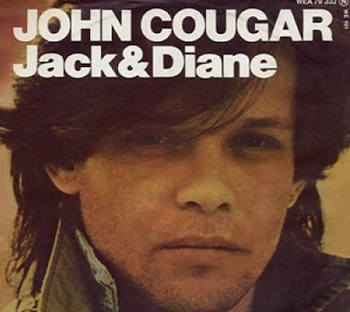A climactic moment is an important part of the energy plan of your song.
_________
Check out “The Essential Secrets of Songwriting” 6-Ebook Bundle – Powerful and effective songwriting instruction!
_________
 The more even the energy map of a song is, the more important a climactic moment becomes. A lot of people think they know what’s meant by song energy, but the real answer would probably surprise most. Even slow, quiet songs with a plucked guitar over a low-range voice need to consider the impact of energy. Energy is whatever keeps a song moving forward. Much of the time, the task of creating energy is given over to producers who craft it using instrumental timbre and range, song tempo, vocal style and basic volume.
The more even the energy map of a song is, the more important a climactic moment becomes. A lot of people think they know what’s meant by song energy, but the real answer would probably surprise most. Even slow, quiet songs with a plucked guitar over a low-range voice need to consider the impact of energy. Energy is whatever keeps a song moving forward. Much of the time, the task of creating energy is given over to producers who craft it using instrumental timbre and range, song tempo, vocal style and basic volume.
But aspects of the architecture of a song help to create energy, and these are aspects that are under a songwriter’s direct control:
- chord choices;
- lyrics;
- melodic range, and in particular, placement of a climactic moment.
Choice of chord can build energy in several ways. Deceptive cadences, for example generate energy by avoiding the tonic chord when it seems to be the obvious choice. A good example of a chord progression with a deceptive cadence is: C F Dm G Am. As you can hear, it sounds as though the tonic chord, C, is the logical end to that progression. By moving instead to Am, the “missed” tonic chord increases energy in a subtle way.
Lyrics will help contour your song’s energy by moving from a “here’s what’s happening” kind of lyric (typical of verses) to a “here’s how I’m feeling” kind of lyric (typical of choruses). Energy can be heightened even more in a bridge lyric, which usually describes more scenarios and deeper emotions.
But melodic range is probably the most important factor under a songwriter’s direct control that can properly shape a song’s energy map. And it goes beyond the simple principle of allowing chorus melodies to sit higher than verse melodies.
A climactic moment is often, but not always, the highest note of a musical section. Each section of a song can have a moment that serves as the most important spot with respect to energy, but the climactic moment in a chorus is arguably a song’s most significant one.
That climactic moment becomes more important if a song’s basic energy represents a relatively smooth line. This is true whether the song is ballad-like (Adele’s “Someone Like You“, 3rd phrase of the chorus), or a song with more energy (The Beatle’s “Lady Madonna“, with a climactic moment that actually occurs at the end of the bridge section).
So songs that show a lot of fluctuation in basic energy at the production-level don’t have the same need for a specific climactic moment. The surging and diminishing energy pattern of the production takes care of that responsibility. A good example is Nirvana’s “Smells Like Teen Spirit.” There’s no arguing that the chorus is enormously more energetic than the verse, but it’s hard to define any one chorus moment as being the climactic one.
A chorus climactic moment seems to work well in two locations: 1) either at or near the start of the chorus (“Jack & Diane“, John Cougar (Mellencamp)), or 2) somewhere in the second half of the chorus (listen to John Denver’s “Looking for Space“, with the climactic moment happening at 1’16”, and “Titanium“, David Guetta, feat. Sia).
_______________
Written by Gary Ewer, from “The Essential Secrets of Songwriting”
Follow Gary on Twitter for songwriting tips.
Read more about Gary’s “Essential Secrets of Songwriting” 6-ebook bundle










Pingback: FEATURED LINK: A Song’s Climactic Moment Needs Careful Placement | Creative Music | Inspiring Musical Creativity
For me, the big moment in Jack and Diane is the middle 8, one of my favorites in all music.
Yes, for me too. It’s hard to quantify the intensity of a climactic moment, because it’s not really just about melody, but it’s about harmony, instrumentation/vocals, and a whole lot of other aspects coming together. If there’s a reason why chorus climactic moments are often more powerful, it’s mainly because the progressions in choruses are usually stronger.
-Gary